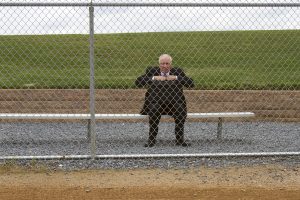When the Fed meets next month, will it deliver to muni investors sitting on the sidelines the long-awaited green light that it’s time to jump back into the market?
After its recent decision to hold rates steady, most analysts predict the Fed will vote to bump rates in December at their final meeting of 2016.
While we don’t quarrel with that view, we advocate a practical analysis of its implications for municipal bond investors.
What municipal bond investors can expect from a rate hike
First, if the Fed does decide to raise rates, it will be miniscule. Remember, the last boost was in December 2015 – the first in nearly 10 years. Surely, anyone expecting a steep sudden rise will be disappointed.
What’s more, the supply of new munis is shrinking. After October’s record-breaking muni issuance of $52.5 billion, the number of issues is tailing off while demand continues to be brisk.

As we pointed out, even foreign investors, unable to capitalize on the tax-free advantage of munis but faced with negative interest rates at home, are turning to the U.S. muni bond market (“Mythologizing Today’s Muni Yields”).
In fact, foreign investors hold $89.7 billion in munis, about three times more than a decade ago, according to Bloomberg.
Finally, consider the conditions behind the years-long struggle to raise rates.
After nudging rates a quarter point in December 2015, most analysts predicted four more rate hikes in 2016, not the single bump now expected next month. While there have been encouraging signs in the economy lately, the case for higher interest rates seems driven more by the bar of low expectations than sustained, robust growth.
Inflation is still below the Fed’s 2.00% target, and despite an economy that is expanding – albeit slowly – for an eighth straight year, infrastructure spending is lackluster. State and local governments, according to the Wall Street Journal, spent an annualized $248.47 billion on construction in August. That’s the lowest amount in almost two years and off about 11% from its recent peak in mid-2015.
Meantime, Europe’s economies are struggling, while the growth of global trade is declining.
A question for muni investors still waiting
For years, potential muni investors have stowed cash in money-losing money-market funds, confident that a spike in long-term interest rates was just around the corner.
The amount of tax-free income they have forfeited is staggering.
If you know people still on the sidelines, you might do them a favor by asking them a simple question: If you were asked a decade ago to predict where interest rates would be today, would you say they’d be higher or lower? If they’re telling the truth, they would say higher, along with virtually every U.S. economist over this time period.
Trying to time the market is futile and costly. Leave Fed watching to the pundits. Regardless of where rates go, you’ll never recoup the income forfeited by being a spectator.

